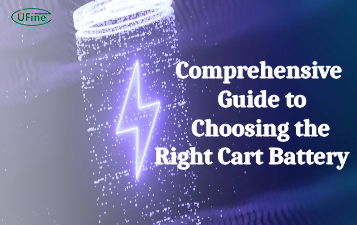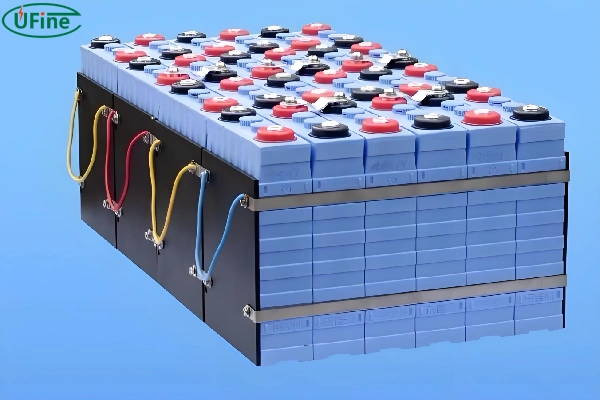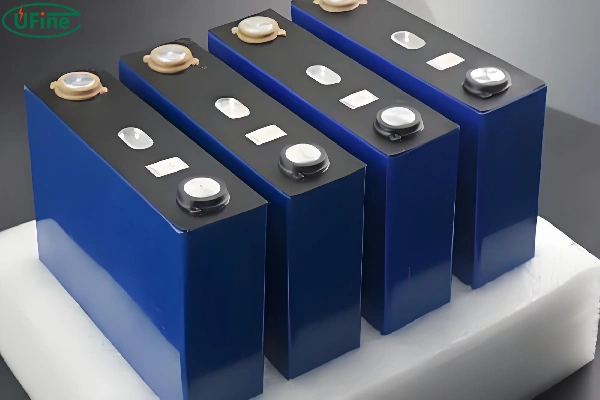Part 1. What is the ternary lithium battery?
A ternary lithium battery is a lithium-ion secondary battery whose positive electrode material uses a ternary polymer such as nickel cobalt manganese or aluminum oxide.
Let’s first understand the basic structure of this battery:
Battery = positive electrode + negative electrode + electrolyte (containing electrolyte)
What is the significance of these three structures to the battery?
- Positive electrode in the lithium battery determines its energy density and is the most important characteristic of the lithium battery;
- Negative electrode plays an oxidizing role;
- Electrolytes play the role of conducting ions.
So, what does “ternary lithium” mean? Let’s take it apart and take a look.
“Ternary” and “lithium”:
- Ternary: The positive electrode of the battery contains a polymer of three metal elements: nickel, cobalt, and manganese (or aluminum);
- Lithium: The electrolyte is a lithium salt mainly composed of lithium hexafluorophosphate.
So, where did the negative electrode go?
The characteristics of the negative electrode material are not reflected in the name, mainly because the negative electrode material of most lithium-ion batteries is graphite.
In the positive electrode materials of ternary lithium batteries, nickel, cobalt, and manganese (or aluminum) are the three indispensable metal elements. One more or one less will affect the battery’s performance or make it impossible to make a battery.
Part 2. The roles of nickel, cobalt, and manganese (or aluminum)
Although nickel, cobalt, and manganese (or aluminum) are indispensable, we can adjust the mixing ratio (molar ratio) of nickel, cobalt, and manganese (or aluminum) in lithium batteries according to our needs to make lithium batteries show different characteristics.
Ternary lithium batteries are a little complicated. The current mainstream solutions are nickel cobalt manganese (NCM) or nickel cobalt aluminum (NCA), and their respective roles are:
- Nickel: It mainly improves energy density, but a content that is too high will reduce the battery cycle life. In addition, it will increase battery activity and reduce safety;
- Cobalt: It can stabilize the layered structure of the material, improve safety, and make the battery charge faster. At the same time, it can improve the cyclability of the material. But because cobalt is a rare metal, the disadvantage is that it is expensive;
- Manganese/aluminum: It can improve battery safety and stability. If the content of manganese/aluminum is reduced, the cost can be optimized, but a large proportion will lead to a lower battery energy density.
According to the different mixing ratios of the three elements of nickel, cobalt, and manganese (or aluminum) in the positive electrode material, there are different ternary lithium battery models, such as 111, 523, 622, 811, etc.
These three elements cooperate and also check and balance each other. Therefore, the development of ternary lithium batteries can be said to always seek an optimal solution. For example, the 523/811/622 that everyone has heard of actually refers to the solution of different proportions of the three elements. However, the three elements in the ternary lithium battery are not resistant to high temperatures and have poor thermal stability. This is a challenge for the battery BMS.
Part 3. Ternary lithium battery pros and cons
Ternary Lithium Battery Pros
- High energy density: The energy density of ternary lithium batteries is high, which can provide higher energy storage capacity and is suitable for some applications with higher energy density requirements, such as electric vehicles.
- Long charge and discharge cycle life: Ternary lithium batteries have a good cycle life. The number of charge and discharge cycles is large and can reach more than thousands of times, which is suitable for long-term use scenarios.
- Fast charging speed: Compared with other lithium-ion batteries, ternary lithium batteries have faster charging speeds.
Ternary lithium battery Cons
1. High cost: Compared with LiFePO4 battery, the manufacturing cost of ternary lithium battery is higher
2. Poor safety: Under extreme conditions, such as high-temperature environments, the safety of ternary lithium batteries is relatively poor.
3. Large size and weight: The energy density of a ternary lithium battery is higher, but at the same energy capacity, its size and weight are usually larger than the LiFePO4 battery.
Part 4. Ternary lithium battery VS LiFePO4 battery
Above, we introduced the advantages and disadvantages of ternary lithium battery; the following is the comparison of the advantages and disadvantages of LiFePO4 battery:
Advantages of LiFePO4 battery:
1. Good safety: LiFePO4 battery is relatively safe in high-temperature environments and has good thermal stability.
2. Low cost: Compared with ternary lithium batteries, LiFePO4 battery has a lower manufacturing cost.
3. Environmental protection: LiFePO4 battery has a lower material cost and does not contain heavy metals, which is an environmentally friendly battery.
Disadvantages of LiFePO4 battery:
1. Relatively low energy density: LiFePO4 battery has lower energy density, and the weight of the battery with the same capacity is also larger
2. Slow charging speed: Compared with ternary lithium batteries, LiFePO4 battery has a slower charging speed.
3. Short cycle life: Compared with ternary lithium batteries, LiFePO4 battery has a shorter charge and discharge cycle life.
The following is a comparison table between ternary lithium batteries and LiFePO4 batteries:
| Features | LiFePO4 battery | Ternary lithium battery |
|---|---|---|
| Cathode material | Lithium iron phosphate (LiFePO4) | “Nickel cobalt manganese oxide (NCM)” “Nickel cobalt aluminum oxide (NCA)” |
| Energy density | Low | High |
| Battery life at low temperature | Poor | Good |
| High temperature stability | Good (decomposition temperature up to 600℃) | Poor (decomposition temperature is about 200℃) |
| Charge and discharge efficiency | Low | High |
| Cost | Low | High (contains rare metals) |
| Cycle performance | Good (up to 3000 times) | Average (1000~2000 times) |
When choosing to use ternary lithium-ion batteries and LiFePO4 batteries, it is necessary to weigh and select according to specific application requirements to meet different requirements for energy density, safety, cost, and cycle life.
Related Tags:
More Articles

Comprehensive Guide to Choosing the Right Cart Battery
Choosing the right cart battery ensures optimal performance and longevity. This guide covers cart battery types and helps you make an informed choice.
The Ultimate Guide to 18650 Button Top Battery
18650 button top batteries are popular for their high energy density and reliability. This guide covers their key features, usage, and maintenance tips.
The Power of Slim: Unveiling the Potential of Flat Lithium Ion Battery
Flat lithium-ion batteries power devices from phones to vehicles. This article explores their design, benefits, types, applications, charging, and safety.
The Comprehensive Guide to Battery Balancing and Battery Balancer
Battery balancing and balancers optimize performance, longevity, and safety. This guide covers techniques and tips for choosing the right balancer.
10 Key Facts About Drone Battery for 2024
Uncover crucial insights with "10 Key Facts About Drone Battery for 2024." Learn the latest trends and essential details on drone batteries.





